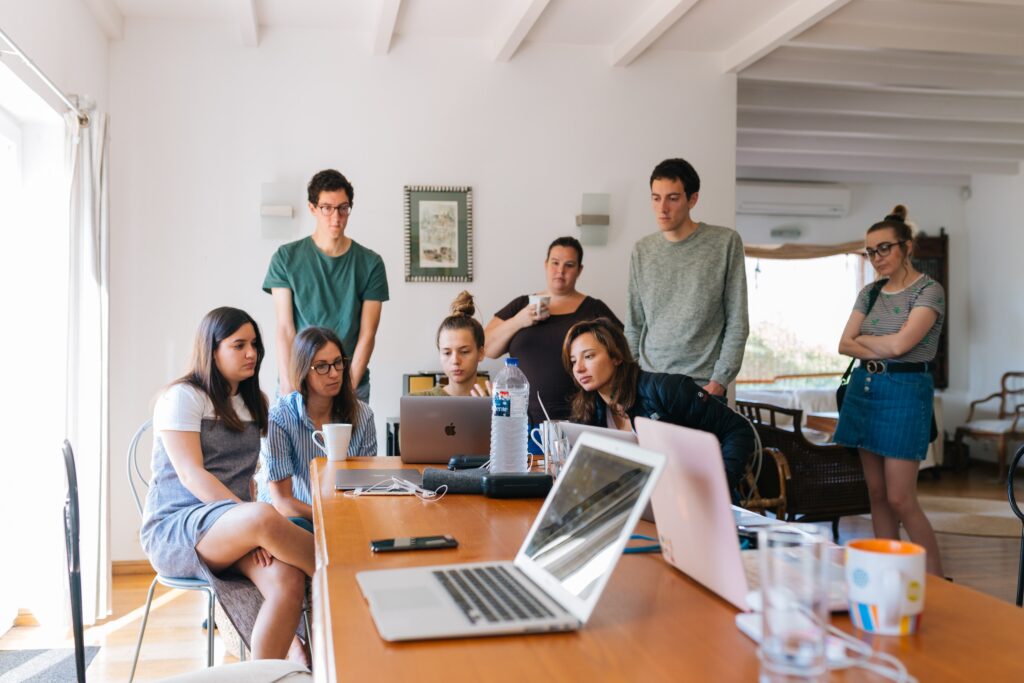Orkla Home & Personal Care (OHCP) and the Essentials project, which focused on a more sustainable business model for cleaning products, are not yet concluded as of this writing in 2021. Like many other projects that emphasize value creation across multiple dimensions, the project undergoes some changes during its course. In this case, we will take a closer look at collaboration and stakeholder involvement.

A revised business model where cleaning products are viewed as a subscription service for customers also involves different approaches to packaging, logistics related to home delivery, and other aspects. With support from the Handelens miljøfond (Retail Trade’s Environmental Fund), the project has evolved from the previously mentioned “Påfyll” project to become a collaboration named “Essentials.”
In addition to OHPC, two other equal partners, Æra and Bakken & Bæck, are involved. Æra is a consulting firm that assists clients with strategic innovation, particularly in sustainability, while Bakken & Bæck is a technology-driven design company. Initially, the two companies were supporting partners, but they have now become equal partners in the project because they share an interest in more sustainable solutions and actively want to contribute. The project is organized with a steering group consisting of representatives from all three companies, and there are three equal project members who make up the leadership and core team of the project. All three companies contribute an equal share of funding, and as Bård Bringsrud Svensen, the innovation leader in OHPC, puts it, all three have “skin in the game,” thus sharing both risks and opportunities.
Solutions for a new and more sustainable business model also place great emphasis on experimentation to find innovative solutions. Therefore, Essentials is also part of a research project where, among others, the Norwegian School of Economics (NHH) and Inland Norway University of Applied Sciences (HINN) are involved. In the experimentation and testing phase, selected households have participated in pilot testing to try out solutions and provide feedback.
The Essentials project is one of several examples where trust and shared interests are crucial foundations for innovation projects. The trust-based collaboration and genuine common interest in finding sustainable solutions and business models have been central to the partnership, says Svensen. The ambition for the project is to develop a new service and circularity in everyday products that can contribute to future-oriented and sustainable solutions.
Essentials is a project that highlights various aspects of stakeholder engagement, collaboration, and organization. Given limited information about the specific project, but with a general understanding of this type of projects, you are to explain and argue for the following aspects.
With a “project lens”: The Essentials project has several stakeholders. Based on the knowledge you have about the project itself, the actors involved, and general knowledge about developing new products in this industry, who do you identify as stakeholders in this project?
With a “project lens” and based on the general knowledge of such projects, we can identify the following stakeholders in the Essentials project:
- Orkla Home & Personal Care (OHPC): OHPC is the main actor in the project and has a direct interest in developing a more sustainable business model for cleaning products. They play a central role in the project and contribute with financing, resources, and leadership.
- Æra and Bakken & Bæck: These two companies are equal partners in the project and contribute with their expertise in strategic innovation and technology-driven design. They share an interest in sustainable solutions and actively contribute to the project’s success. They are supportive stakeholders with a direct benefit from the project’s outcomes.
- The Retail’s Environmental Fund (Handelens miljøfond): As a supporter of the project, The Retail’s Environmental Fund provides financial support and resources. They have an interest in promoting sustainable solutions within the retail sector and are a supportive stakeholder.
- The Norwegian School of Economics (NHH) and Inland Norway University of Applied Sciences (HINN): These two academic institutions participate in the project as part of the research initiative. They have an interest in generating new knowledge and insights into sustainable business models and are supportive stakeholders.
- Selected households: The households participating in the pilot implementation to test solutions and provide feedback are stakeholders in the project. Their role is to contribute with practical insights and feedback on the developed solutions.
Other relevant stakeholders could include suppliers of raw materials and materials, distributors, customers, and consumer organizations affected by the project’s changes in the business model.
If you were to categorize the stakeholders according to the following categories:
- Marginal stakeholder
- Non-supportive stakeholder
- Supportive stakeholder
- Mixed stakeholder
Where would you place each of these, how would you do it, and what arguments would you use?
Based on the mentioned stakeholders, we can sort them into the following categories:
- Marginal stakeholders: There are no specific marginal stakeholders mentioned in the case, but they could be actors who do not have direct influence or interest in the project’s outcomes.
- Non-supportive stakeholders: There are also no specific non-supportive stakeholders mentioned in the case. These could be actors who are skeptical or reluctant towards the project’s goals and changes in the industry.
- Supportive stakeholders: OHPC, Æra, Bakken & Bæck, Handelens miljøfond, Handelshøyskolen i Bergen, and Høgskolen i Innland can be considered as supportive stakeholders. They are directly involved in the project and actively contribute to achieving the project’s objectives.
- Mixed stakeholders: Selected households and other relevant stakeholders could be considered as mixed stakeholders. Their attitudes and support for the project may vary depending on their perception of the developed solutions and how they are affected by the changes.
With the limited information provided in the case, it may be challenging to identify and analyze the strategy employed concerning stakeholder management. Nevertheless, if you were to describe the chosen strategy and connect it to what has been said about stakeholder engagement, how would you argue?
Regarding the collaboration strategy, based on the case, one could argue that the project has chosen a strategy of close collaboration and involvement with stakeholders. This can be observed through the following points:
- Equal partnership: Æra and Bakken & Bæck, originally supporters of the project, have become equal partners in it. This demonstrates a strategy of including and engaging external actors in a more integrated manner.
- Steering group: A steering group consisting of representatives from all three organizations has been established to provide overall governance and decision-making authority in the project. This illustrates a strategy of collaboration and cooperation at the management level.
- Research project and pilot implementation: The inclusion of the Bergen Business School and the University College of Inland, as well as selected households in the research project and pilot implementation, shows a strategy of collaborating with external actors to generate knowledge and test solutions in real-life situations.
This collaboration strategy is built on trust and shared genuine interests in finding sustainable solutions and business models. It helps engage stakeholders, leverage external expertise, and increases the project’s chances of success.
This case is taken from the book “Verdiskapende Prosjektledelse” – 2022, 2. Edition, by Torgeir Skyttermoen og Anne Live Vaagaasar.



